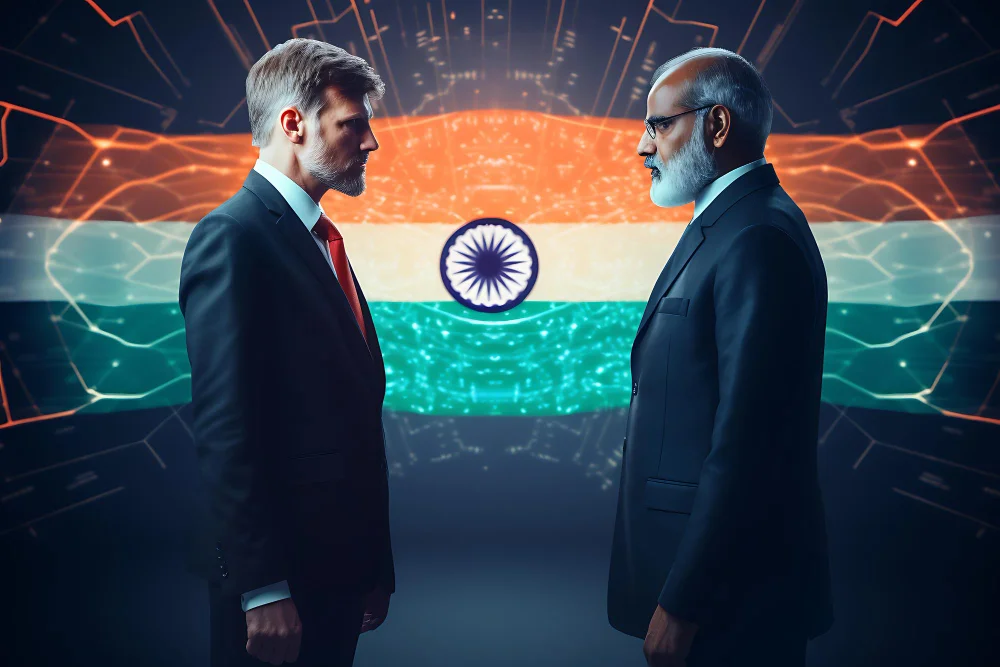India finds itself in a complex position on the world stage. As a rising power, India has deep ties with both the United States and Russia, two nations with vastly different foreign policies and global objectives. This unique balancing act requires India to navigate its alliances carefully, balancing political interests with economic goals and maintaining its sovereignty in an ever-polarized world. Here’s an in-depth look at how India manages its relations with the U.S. and Russia while staying true to its own interests.
India’s Historical Ties with Russia
India’s relationship with Russia stretches back to the Cold War era. During that time, India chose a non-aligned position but leaned toward the Soviet Union for defense support and diplomatic backing. This alliance allowed India to strengthen its military, and the two nations built a strategic partnership that continues to hold weight today. Despite Russia’s post-Soviet transformation, India still relies on Russia for a large percentage of its defense equipment and has strong cultural and diplomatic connections.
Strengthening Relations with the United States
While India and Russia share a long-standing partnership, India’s relationship with the United States has grown significantly over the past few decades. Economic liberalization in the 1990s opened India’s market to American businesses, and the two countries found common ground on issues like democracy and counterterrorism. Today, the U.S. sees India as a crucial ally in countering China’s influence in the Indo-Pacific region, a strategic alignment that has led to increased cooperation in technology, trade, and defense.
Key Areas of Cooperation with the U.S. and Russia
Balancing relationships with both the U.S. and Russia means that India engages in distinct types of partnerships with each country:
- Defense: Russia supplies India with defense systems, including advanced missile systems, while the U.S. has recently begun supplying defense technology to India to help modernize its military.
- Energy: India relies on Russian oil to meet its growing energy demands. Simultaneously, the U.S. supports India in developing renewable energy sources to reduce fossil fuel dependence.
- Technology: The U.S. tech sector has a substantial presence in India, with Silicon Valley giants investing in Indian tech startups. However, India also cooperates with Russia in space technology and nuclear energy.
- Counterterrorism: Both the U.S. and Russia work with India to combat terrorism, though their strategies and regional focus differ.
Challenges of Maintaining a Balanced Stance
India’s dual alliances are not without challenges. The U.S. and Russia have opposing stances on several global issues, and India’s close relations with each can sometimes place it in a difficult position. For example:
- Sanctions on Russia: The U.S. has imposed sanctions on Russia due to its actions in Ukraine, affecting India’s defense imports from Russia. India has to carefully navigate these sanctions to avoid risking its defense supplies.
- Indo-Pacific Strategy: The U.S. seeks India’s cooperation in countering China in the Indo-Pacific, but India must balance this with its own diplomatic strategy, which includes maintaining a stable relationship with Beijing.
- Nuclear Cooperation: Both the U.S. and Russia support India’s nuclear capabilities, but the nuances of these partnerships can sometimes clash, especially when geopolitical tensions rise.
The Strategic Autonomy Doctrine
India’s foreign policy is deeply rooted in the principle of strategic autonomy. This approach allows India to avoid strict alignment with any single power. Instead, India’s goal is to make decisions that serve its own interests, even if they don’t align perfectly with either the U.S. or Russia’s agendas. By upholding strategic autonomy, India maintains the flexibility to pursue its independent goals, such as economic growth and regional stability.
Recent Developments in U.S.-India-Russia Relations
In recent years, India has continued to expand its partnerships with both the U.S. and Russia:
- U.S.-India Trade Agreement: Recent trade talks have led to greater economic cooperation, benefiting both nations and paving the way for future strategic alignments.
- Russia-India Defense Deals: India continues to purchase Russian defense equipment, like the S-400 missile system, despite facing criticism and potential sanctions from the U.S.
- Quad Alliance: India’s membership in the Quad (along with the U.S., Japan, and Australia) showcases its willingness to work with the U.S. on regional security issues while maintaining its ties with Russia.
India’s Diplomatic Maneuvering: A Balancing Act
India’s foreign policy approach is nothing short of a diplomatic tightrope. Balancing the influence of two global powers demands careful diplomacy and clear priorities. Here’s how India manages this balancing act:
- Multi-Alignment: Instead of choosing one alliance over the other, India embraces a multi-alignment approach. This allows it to maintain productive relationships with multiple countries, regardless of their rivalries.
- Economic Independence: India is working toward reducing its reliance on any single nation for critical resources, such as energy and defense. By diversifying its trade partners and suppliers, India can continue to work with both the U.S. and Russia without becoming overly dependent on either.
- Regional Stability: India uses its relationships with both powers to promote stability in South Asia, a region affected by complex issues like border disputes, terrorism, and economic development.
The Role of Domestic Opinion and Political Pressure
While foreign policy is often shaped by global events, domestic opinion also plays a role in India’s approach to international alliances. Indian citizens generally favor the country’s independent stance, valuing sovereignty over alignment with any single power. Indian leaders must consider these sentiments as they navigate complex global alliances. Additionally, political pressures from both the U.S. and Russia require India to act carefully and avoid favoring one power too openly, maintaining an image of a balanced and independent nation.
Future Outlook: Can India Maintain This Balance?
The future of India’s balancing act between the U.S. and Russia will depend on how well it adapts to a changing global landscape. Rising tensions between global powers and shifting economic trends will continue to challenge India’s diplomacy. However, India’s commitment to strategic autonomy and multi-alignment suggests it is well-prepared to navigate these complexities. In the coming years, India’s role as a mediator and a powerful yet neutral player could strengthen, enabling it to shape regional and global politics on its own terms.
Conclusion: India’s Path to Sovereign Diplomacy
India’s diplomatic strategy demonstrates the country’s commitment to maintaining its sovereignty while engaging with global powers. By leveraging its relationships with both the U.S. and Russia, India enhances its position on the world stage. In a world where alliances are often rigid, India’s flexible approach serves as a model for other nations striving to maintain independence amid global pressures. As India continues its journey as a rising power, its balancing act between the U.S. and Russia will remain a key part of its strategy for years to come.


